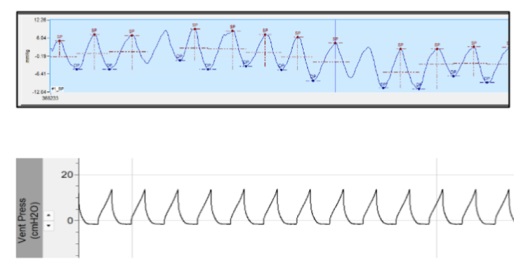

- Home
- Companies
- SCIREQ - an emka TECHNOLOGIES Company
- Articles
- A New Approach to Respiratory ...
A New Approach to Respiratory Monitoring in Preclinical Research without restraint or acclimation
In preclinical respiratory studies, traditional methods like plethysmography often require animal restraint and extensive acclimation, limiting their ability to capture dynamic respiratory changes.
To overcome these challenges, IPS Therapeutique Inc. validated a novel telemetry-based technique for continuous monitoring of intrapleural pressure and respiratory patterns in conscious, freely moving rats.
Using easyTEL+ M1 telemetry implants, they monitored respiratory function in rats under both baseline and challenge conditions. The pressure catheter was surgically implanted into the thoracic cavity, beneath the esophageal serosa, allowing for chronic, high-fidelity measurement of intrapleural pressure.

To validate the method, they compared telemetry data with plethysmography and exposed animals to respiratory challenges including:
- LPS (lipopolysaccharide) to simulate inflammation
- Capsaicin to activate sensory neurons
- Hypoxia to mimic low-oxygen environments
- Telemetry closely matched plethysmography in detecting changes in breathing rate, tidal volume, and inspiratory flow (figure 2).

- Telemetry allowed to monitor the positive correlation between breathing rate vs. heart rate, and the negative correlation between intrapleural pressure and breathing rate (figure 3).

- LPS challenge led to significant increases in inspiratory velocity and tidal volume, that were revealed by both plethysmography and telemetry.
- Capsaicin caused subtle changes, with longer inspiratory times during recovery, while hypoxia resulted in decreased breathing rate and inspiratory flow, clearly captured by telemetry.
- Plethysmography detected brief respiratory pauses that telemetry did not.
While plethysmography detected brief respiratory pauses that telemetry did not, implanted telemetry mirrors the changes in pressure captured by whole-body plethysmography, and offers key advantages, such as no need for restraint or acclimation, real-time, longitudinal monitoring and simultaneous monitoring of heart rate, temperature, and activity.
Both methods proved complementary—each offering unique insights into respiratory physiology.
